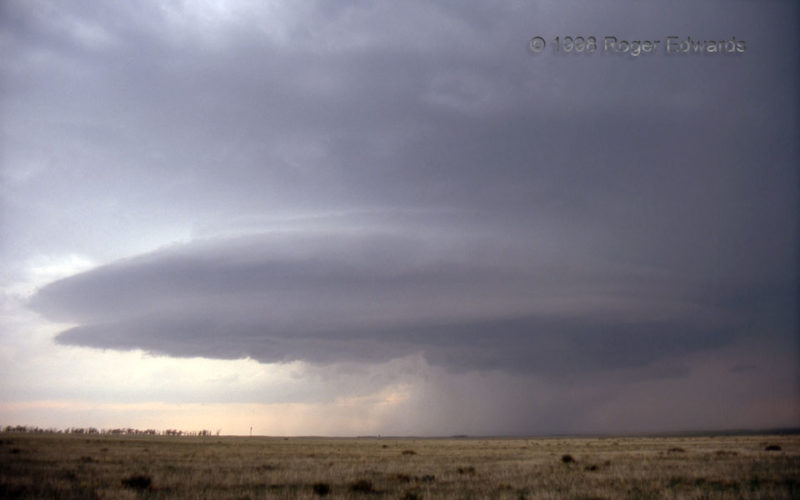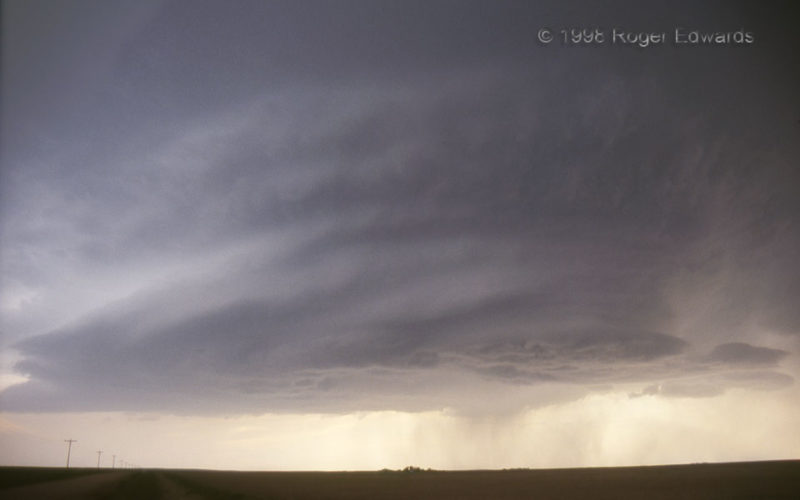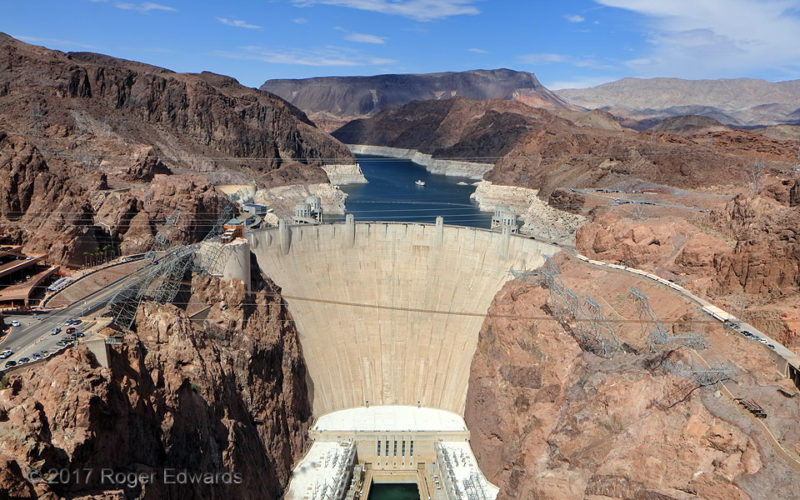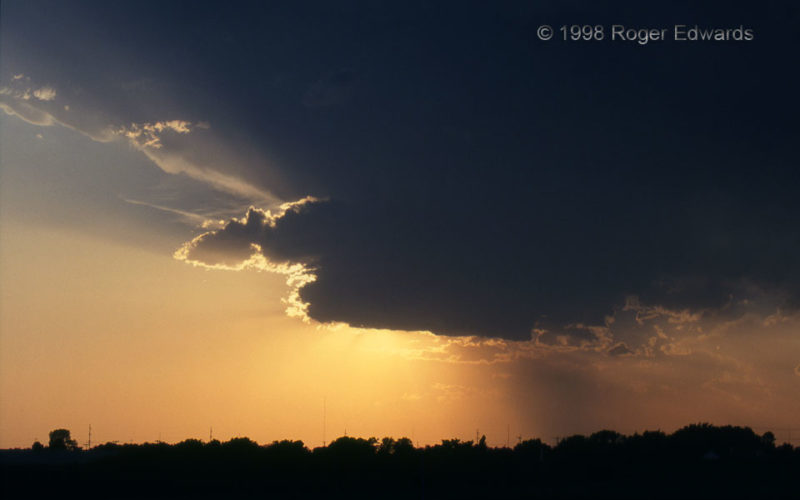Buried by floods of mud a quarter billion years ago, exhumed relatively recently by uplift-accelerated erosion, these silica forms mimic the wooden logs they replaced underground, cell by cell. These chunks probably wore out of softer rock ledges as high, or higher than, the log-festooned platform at rear left. Background bases of building convection remind us how these petrified logs came to … [Read more...]
Feast at Joes
[Part 2 of 2] While posing for my slide camera, a classic, Colorado High Plains supercell proceeded eastward, deeper into both the late-afternoon light and a gradually stabilizing boundary layer. The latter, as often happens, led to a smoother, more-striated appearance as the storm's internal low-pressure circulation (mesocyclone) forced that cooler inflow air upward. For just a little while, … [Read more...]
Colorado High Plains Supercell
[Part 1 of 2] The striated, high-based supercell is a Great Plains trademark, and this wonderful specimen from 1998 was one of my early introductions to their captivating splendor. The drier, cleaner air masses on the High Plains keep low- and middle-level obscuring clouds from forming, stripping storms down to their sculpted, skeletal splendor. This was definitely a storm with which I could … [Read more...]
Hoover Dam: Summer Day
Hoover Dam is nearly as much a marvel of engineering today as when it was finished in 1936—a 726-foot-high arch-gravity structure with a volume of 3-1/4 million cubic yards. The design efficiently transfers the water pressure's force into the canyon walls, which consist of relatively young (Miocene), pink to buff and mauve-colored volcanic tuffs. Hydroelectric power sales subsidize dam … [Read more...]
Another Fine Season Finale
A high-based, weakly rotating low-precip (LP) supercell that had a golden lining now was set aglow with deepening reds from top to bottom, capping off one of my finest storm seasons. [Or so I thought at the time...but who imagined there would be a photogenic tornado event the following October?] By this time, the short-lived but intense central Oklahoma drought had set in. Rain was scant and … [Read more...]
Some Clouds Have a Golden Lining
Here is yet another amendment to the popular saying! The lowering sun's rays assume more yellow hues as they pass through a larger section of the earth's atmosphere. This filters out light from the blue end of the visible spectrum, leaving predominant yellows, then reds, as the sun sets. The high-based cumulonimbus (thunderhead) here was weakly rotating and LP (low precipitation) in character, … [Read more...]
- « Previous Page
- 1
- …
- 113
- 114
- 115
- 116
- 117
- …
- 386
- Next Page »





